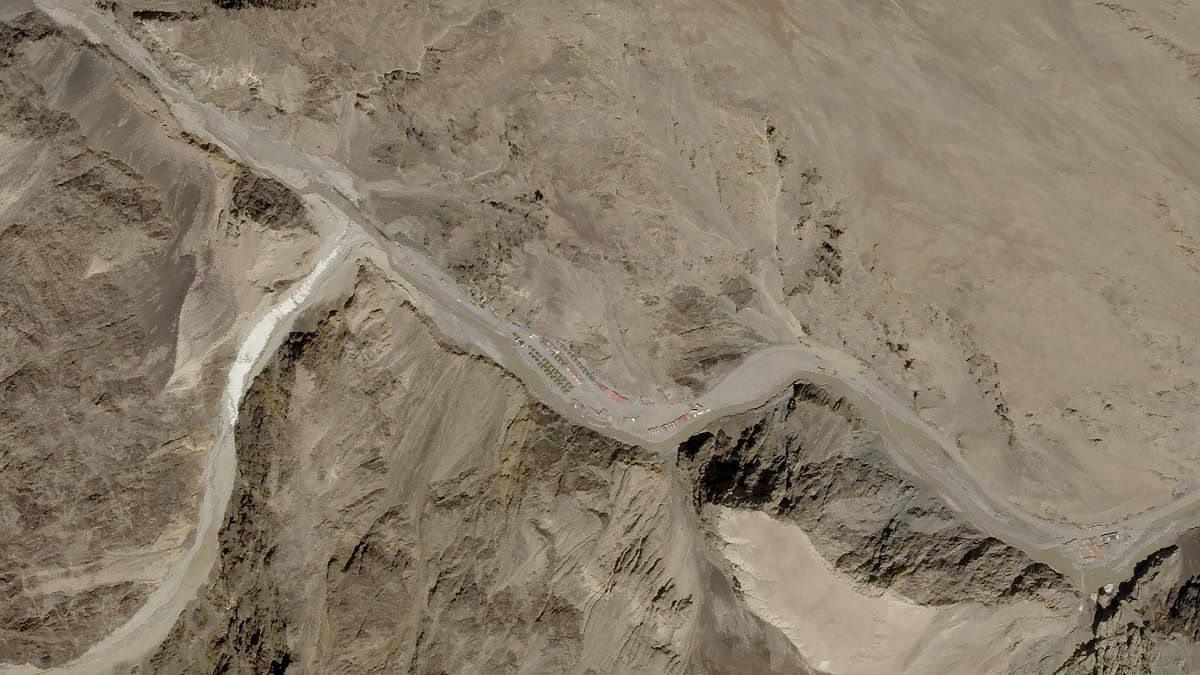
The border dispute between India and China and India-Nepal has brought focus on the Chinese invasion of Tibet again. The Tibetan people who took refuge in India feel China was never a neighbour of India until Tibet was annexed by China in a proxy imperialist movement.
“Tibet was a sovereign country and was invaded by China, it was only India that stood by us in the entire world and India even fought for us in 1962. The time has come for the Tibetans and the other democratic countries in the world to free Tibet from the clutches of China”, are the sentiments expressed by young Tibetans in India and few others studying in Canada, United States and in Europe.
The Students for Free Tibet (India) which has roots in India but has assumed international dimension after the members moved on with their education in other countries, like Canada, the USA etc opine that India and the world have now understood the imperialistic nature of China and the change in the stance of Nepal, and Chinese aggression in Doklam and Ladakh’s Galwan Valley.
“I was born in Tibet and escaped to India when I was a little boy. I lost my nation under the occupation by the Chinese Communist Party. As a result, millions of Tibetans died either by military force or as the result of the occupation. It is my dream that I go back to Tibet and die there. Ever since my departure from the homeland, I have always missed my homeland. I always believe that Tibet will be a free nation again,” Younten Phuntsok, a Tibetan student studying in Canada felt.
A large community of Tibetan students, after completing their under-graduate education, have been pursuing their post-graduate education in Canada, the USA and in Europe, and are still active about their motherland. They warn that what happened to Tibet can happen to India also.
“Before the invasion of Tibet, China was far away from Indian borders. Tibet was a neighbour of India. Now, China is trying to annexe Galwan Valley in Ladakh and soon it might even claim Jammu and Kashmir. This is the time for India to stand up and fight for the Tibetan cause as well as its own, in the international platform. India has got some recognition in the UNSC, it must push harder,” Rinzin Choedon, Director of the Student for Free Tibet Movement from Dharmasala points out.
“For centuries, Tibet and India enjoyed peace and friendship. China did not share a border with India until 1959. Over 1.2 million Tibetans have died as a direct result of China’s occupation of Tibet. However, Tibetans inside Tibet and in exile have never wavered in our struggle against the colonial occupation of our homeland,” Choedon added.
Karnataka had been one of the most important centres of rehabilitation of Tibetan people. Their colony at Bylakuppe in Mysuru district has shown how progressive are the people of Tibet. Their good practices in agriculture, education, social movements and above all, their love for peace has been demonstrated amply.
Tibetans here feel India and governments across the world must recognise Tibet as a separate, historically independent country that remains under China’s illegal occupation. The Tibetan students studying in University of Mysuru, St Aloysius College in Mangaluru, Kaveri College and Field Marshal Cariappa College in Madikeri and in few colleges of Bengaluru organise Tibetan National Uprising Day on March 10 every year since the 1960s.
Socio-political history
The ‘Shadow Tibet’ portal compiled by Jamyang Norbu for the Rangzen Alliance charts the socio-political history of Tibet: “Tibet was a fully functioning and independent state before the Chinese invasion. It threatened none of its neighbours, fed its population unfailingly year after year with no help from the outside world, and owed nothing to any country or international institution.”
Although insular, theocratic and not a modern democracy, Tibet maintained law and order within its borders and conscientiously observed treaties and conventions entered into with other nations. It was one of the earliest countries to enact laws to protect wildlife and the environment – recurrently cited in the “Mountain Valley Edicts” issued since 1642, and possibly earlier.
Tibet abolished capital punishment in 1913 (noted by many foreign travellers) and was one of the first nations in the world to do so. There is no record of its persecuting minorities. Although Tibet’s frontiers with India, Nepal and Bhutan were completely unguarded and Tibetans were “great travellers”, very few of them fled their country as economic or political refugees. There was not a single Tibetan immigrant in the USA or Europe before the Communist invasion, the portal says. This is also vindicated in the 2017 book by France-born author now settled in India Claude Arpi in ‘Tibet: Last Months of a Free Nation”.
“Tibet’s independence is key to India’s national security. China never shared its border with India until Tibet was illegally occupied by the People’s Liberation Army in 1949. India should at least now denounce ‘One China Policy’ and rethink its stand on Tibet,” said another student.
Muzzaffar Assadi, head of the department of political science in the University of Mysore is of the opinion that Tibetan issues have cropped up again due to the pro-Chinese moves of Nepal. “China and Nepal belong to the same political ideology. Nepal in the post-King Birendra regime belong mostly to Communism. China might be looking at Nepal as a buffer state which might be a route to enter India for many reasons trade, strategic and even in war.”
He added: “So, the Tibetan view is absolutely valid. But India’s support to Tibet can be more viable only when India can muster enough international support to stifle China, socially and more important, economically. China has to also introspect if it can still live with two ideologies - Communism in the mainland and capitalism in Hong Kong.”